AMD: Path Towards 57% Of Gross Margin
A comprehensive analysis of AMD.
Content:
• Company Overview
• Market Overview
• Economic Moat
• Business Strategy
• Capital Allocation
• Advantages
• Disadvantages
• Competitors
• Past
• Future
• Current Valuation
• Fair Price
• Checklist
• Due Diligence
• Investment Thesis
Company Overview
Market Cap: ~$178.86B
Sector: Technology
Industry: Semiconductors
Type: Large Core
Total Number of Employees: ~28,000
Next earnings report: July 29, 2025 (estimated)
Total Debt: $4.73B
Cash & Investments: $7.31B
Beta: 1.97
Website: www.amd.com
Advanced Micro Devices (AMD) is a global semiconductor company based in Santa Clara, California. Founded in 1969, it designs CPUs (central processing units), GPUs (graphics processing units), FPGAs (Field-Programmable Gate Arrays - explanation below), and other chips for PCs, gaming consoles, data centers, and industrial devices.
Dr. Lisa Su, CEO since 2014 and Board Chair since 2022, has led AMD’s transformation into a serious rival to Intel and Nvidia. Under her leadership, the company expanded into AI, embedded, and industrial markets. Su guided strategic deals such as the $50 billion acquisition of Xilinx, plus the purchases of Pensando, ZT Systems, and Silo AI. These moves helped AMD move beyond consumer chips and focus on enterprise and data center clients.
AMD works with major cloud providers and enterprise clients. Amazon Web Services, Microsoft Azure, Google Cloud, Meta, Tencent, and Alibaba use AMD’s EPYC CPUs and Instinct GPUs for AI and general workloads.
Partners like Dell, HPE, Lenovo, and Supermicro offer AMD-powered servers. Dell also offers commercial PCs with Ryzen Pro chips. In gaming, AMD supplies Sony and Microsoft with custom processors for PlayStation and Xbox. AMD has 100+ subsidiaries worldwide.
In 2024, AMD generated $25.79 billion in revenue, reporting results across four segments: Data Center (48.78%), Client (27.36%), Embedded (13.79%), and Gaming (10.06%).
In addition to CPUs, AMD produces APUs (Accelerated Processing Units), which combine CPU and GPU components on a single chip for space-saving performance in laptops and desktops.
AMD’s revenue is geographically diversified. In 2024, the United States contributed the largest share at 34.45%. China was the second-largest market, accounting for 24.7% of total revenue. Taiwan followed with 13.08%, and Singapore contributed 14.32%. Japan and Europe provided smaller shares at 7% and 6.44%, respectively.
This regional diversification shows that the company relies on both domestic and Asia-Pacific markets, especially China and Taiwan, which together represented more than one-third of its annual revenue.
Market Overview
AMD continues to gain CPU market share against Intel across desktop, laptop, and server segments. As of early Q1 2025, AMD holds approximately 24.7% of the overall x86 CPU market, up 4.3% year-over-year, with desktop CPU share near 27%, laptop CPUs around 23.7%, and server CPUs about 25.1% by units sold. AMD's server CPU revenue share is even stronger at 35.5%, indicating outselling Intel in revenue terms in that segment.
AMD’s Momentum
AMD’s Ryzen 7000 and 8000 series have solidified its reputation for exceptional multi-threaded performance, while efficiency improvements with 4nm and 5nm nodes (thanks to TSMC) helped boost competitiveness across price tiers. In the enthusiast DIY market, AMD’s value proposition—more cores per dollar—continues to sway consumers.
In a significant milestone, AMD’s EPYC server chips have begun to outsell Intel’s Xeon line in revenue. The Genoa and Bergamo chips, in particular, gained traction with hyperscalers and AI workloads. AMD’s server revenue now accounts for almost 40% of the total server market (comment below), driven by performance-per-watt advantages and architectural innovations.
Analyst’s Note:
The comparison above is a bit outdated. It says that AMD holds 35.5% of the server market share, but the image below shows more recent data - it is even higher.
AMD’s strong showing on the Steam Hardware Survey, nearing 40% CPU market share, reflects increasing adoption among gamers. This growth is partially fueled by budget-conscious builders and streamers who benefit from Ryzen’s higher core counts and better multitasking performance.
AMD has undercut Intel in several segments, offering more threads and unlocked performance at similar or lower price points. This strategy has earned them consumer goodwill and retailer support, particularly in Europe and Asia.
Lunar Lake
Despite AMD’s momentum, the competitive landscape is evolving fast. Intel is expected to launch its Lunar Lake chips later in 2025, with massive architectural overhauls focused on AI and integrated graphics. Analysts are anticipating aggressive pricing tactics from Intel, with potential CPU price cuts of 20–40%, aiming to regain consumer share - especially in laptops.
Economic Moat
AMD has a narrow economic moat due to its strong intellectual property and strategic licensing. It is one of only several companies, along with Intel, licensed to use the x86 instruction set architecture. This license includes a cross-licensing agreement that would be terminated if either company is acquired or loses control.
The x86 architecture is primarily used by Intel and AMD to produce processors. While other companies like VIA Technologies and DM&P Electronics hold x86 architectural licenses, only Intel and AMD actively develop and manufacture modern 64-bit processors.
Although ARM-based chips are gaining share, x86 still dominates software support. The importance of x86 remains strong in Windows-based PCs and enterprise servers.
AMD benefits from its deep partnership with TSMC, which improved performance by up to 40 percent with fewer servers, lower cost, and reduced power consumption by deploying 4th Gen AMD EPYC™ CPUs.
Simon Wang, director of Infrastructure and Communication Services Division at TSMC:
With the most advanced TSMC fab, more than 90 percent of the workload now runs on 4th Gen AMD EPYC CPUs. We now have close to 20,000 servers powered by AMD EPYC CPUs across our three workload areas, with 6,600 already powered by 4th Gen AMD EPYC CPUs.
AMD designs its chips and outsources manufacturing to TSMC, which currently leads in advanced 5 nm and 7 nm nodes. Intel, by contrast, struggled with internal production, giving AMD a time-to-market advantage.
Read also:
AMD also uses a chiplet architecture that allows separate parts of a processor to be made efficiently and combined later. This helps improve yields and product flexibility.
Chiplet architecture involves designing a chip as a modular system of smaller, specialized silicon dies (chiplets) that are interconnected to form a complete system. This modular approach offers advantages like flexibility, efficiency, and scalability in chip design, allowing for customization and easy upgrades.
Additionally, AMD’s FPGA business from the Xilinx deal gives it a unique moat, as switching vendors in the FPGA market requires retraining and system redesigns.
Field Programmable Gate Arrays (FPGAs) are integrated circuits often sold off-the-shelf. They're referred to as 'field programmable' because they provide customers the ability to reconfigure the hardware to meet specific use case requirements after the manufacturing process.
Dr. Lisa Su, Chair & CEO:
The acquisition of Xilinx brings together a highly complementary set of products, customers and markets combined with differentiated IP and world-class talent to create the industry’s high-performance and adaptive computing leader. Xilinx offers industry-leading FPGAs, adaptive SoCs, AI inference engines and software expertise that enable AMD to offer the strongest portfolio of high-performance and adaptive computing solutions in the industry and capture a larger share of the approximately $135 billion market opportunity we see across cloud, edge, and intelligent devices.
Let’s compare the x86 architecture with ARM.
What is x86?
x86 is a processor architecture that comes from Intel and later, AMD. It's been the backbone of traditional PCs for decades. Think of it as the “classic” processor design you’ll find in:
Most Windows desktops and laptops
Older MacBooks (before Apple switched to Apple Silicon)
Gaming rigs and performance-heavy machines
Many enterprise servers
x86 uses a design philosophy called CISC (Complex Instruction Set Computing), meaning it supports many rich and complex instructions. This is great for flexibility and performance, but it tends to be power-hungry.
What is ARM?
ARM, short for Advanced RISC Machine, is an entirely different architecture that focuses on simplicity and efficiency. It uses RISC (Reduced Instruction Set Computing), which keeps things lean — fewer instructions, executed faster and with less power.
ARM chips are famous for their power efficiency, which makes them perfect for:
Smartphones (iPhones, Androids)
Tablets
Raspberry Pi and IoT devices
New MacBooks (Apple’s M1, M2, M3 chips)
Some Chromebooks and even servers (like AWS Graviton)
Business Strategy
The company is targeting long-term share gains in AI GPUs and x86 server CPUs. It aims to be a strong second supplier after Nvidia in the AI market. AMD estimates the AI accelerator market could grow to $500 billion by 2028. To capture part of this growth, AMD launched the MI300 series, built on CDNA 3 architecture, with 192 GB of memory, optimized for large language model training and inference.
Major AI partners already use AMD’s products. Meta deployed MI300X GPUs in its Grand Teton platform for deep learning models. IBM added MI300X to its Watson X platform for enterprise AI training. Microsoft is using MI300X to power several GPT-4-based Copilot tools. Dell is offering AMD’s AI hardware as part of its AI Factory suite. AMD also developed the Instinct platform, which combines eight MI300X chips into a single server for demanding AI workloads.
In addition to organic growth, AMD completed strategic acquisitions. As already noted, Xilinx brought FPGA expertise and access to automotive and communications. Another acquisition - Pensando added DPUs and networking technology. And, ZT Systems added data center infrastructure and services. These deals help AMD provide not just chips, but full solutions to hyperscale cloud providers.
Business segments
Computing and Graphics: This segment includes AMD’s desktop and notebook processors, which include both central processing units (CPUs) and accelerated processing units (APUs), as well as discrete graphics processing units (GPUs). Products like the Ryzen processors for consumer markets and Radeon graphics cards are under this category. Major rivals are Intel and NVIDIA.
Enterprise, Embedded, and Semi-Custom: This segment includes server and embedded processors, semi-custom System-on-Chip (SoC) products, development services, and technology for game consoles. Key products here are the EPYC processors, which target data center and cloud environments, and the custom-designed chips used in major gaming consoles like PlayStation and Xbox.
Xilinx Products: With the acquisition of Xilinx, AMD has expanded into adaptive computing products, focusing on FPGAs, adaptive SoCs, and the software solutions that support them. This acquisition positions AMD strongly in markets requiring high-performance computing solutions, such as telecommunications, automotive, aerospace, defense, and AI-driven applications.
Capital Allocation
AMD manages capital with discipline and long-term focus. As of March 2025, the company held $7.31 billion in cash and had $4.73 billion in total debt (chart above). It does not pay a dividend but returns capital through share repurchases. In Q4 2024, AMD bought back 1.8 million shares worth $256 million. And in Q1 2025, the company reported a share repurchase program of $749 million returned to shareholders.
In May 2025, AMD announced that its board of directors approved a new $6 billion share repurchase program. The new authorization is in addition to the remaining balance of approximately $4 billion of its existing share repurchase program, increasing the total current repurchase authority to approximately $10 billion.
Strategic investments, described above, support AMD’s expansion in AI and embedded systems. The Xilinx deal was accretive and opened new verticals. Pensando and ZT Systems strengthened AMD’s networking and AI system offerings. These investments help AMD move toward higher-margin segments and reduce exposure to the more cyclical PC market.
In recent years, the company has significantly increased its R&D expenses to about 24% of revenue (chart above).
As the company grows in the Client and Data Center businesses, its gross margin expanded from 45% in 2020 to 53% in 2024. It targets a long-term gross margin of 57% and an operating margin of 35% by 2029.
Worth noting about AMD Ventures - a global, multi-stage investor working with leading companies in AMD’s largest and growing markets.
Advantages
Strong partnerships with top cloud service providers. AWS, Microsoft, Meta, and others use AMD’s EPYC CPUs and Instinct GPUs in their infrastructure. These partnerships open up recurring high-value business in AI and cloud computing.
To read: AMD Data Center Partner Ecosystem
Client segment revenue increased 68% year over year in Q1 2025. This growth was driven by Ryzen desktop and mobile processors. AMD’s agreement with Dell to power commercial laptops with Ryzen Pro chips also boosted sales in this segment.
The company generates strong free cash flow. In Q1 2025, reported free cash flow was $727 million. This financial strength allows AMD to fund R&D, acquisitions, and buybacks without taking on excess debt.
AMD uses advanced 5 nm and 6 nm process nodes from TSMC. These nodes support the Radeon RX 7900 series and help AMD offer high-efficiency GPUs. This gives it an edge over Intel, which is still working to catch up in process technology.
AMD’s FPGA business is growing with new adaptive SoCs like the VP1902, which offers 18.5 million logic cells and twice the bandwidth of previous generations. These chips are used in aerospace, defense, and industrial testing, opening up non-consumer revenue streams.
Disadvantages
AMD’s Gaming segment declined sharply, with revenue falling 30% year over year in Q1 2025 to $647 million. This drop was caused by lower sales of gaming GPUs and semi-custom chips for aging consoles.
Customer concentration. AMD supplies chips to Sony and Microsoft for PlayStation and Xbox. If either company switches to a competitor in the next console cycle, AMD could lose a significant portion of its Gaming revenue.
AMD wrote off $800 million in MI308 GPUs due to new US export restrictions on AI chip sales to China. These write-offs directly impact AMD’s ability to grow in a large global market, and new restrictions could further limit future sales.
Nvidia’s CUDA platform is still the preferred software stack for AI development. Even though AMD’s hardware is improving, its software ecosystem is less mature, making it harder for developers to switch from Nvidia GPUs.
Read also:
The PC market is cyclical and remains under pressure from tariffs and weak demand. Although AMD is gaining share, Intel is investing heavily in manufacturing and may regain lost ground. If that happens, AMD could face pricing pressure in both PC and server chips.
Competitors
Intel remains AMD’s main competitor in the x86 CPU market. AMD has gained share while Intel struggled with manufacturing delays. However, Intel aims to recover by the end of 2025 with new process nodes and internal improvements. If successful, Intel could slow AMD’s momentum, especially in desktops, laptops, and servers.
Nvidia leads the AI GPU market and has built a wide moat through its CUDA software. CUDA tools are used across AI training and deployment, creating lock-in for developers. While AMD’s MI300 GPUs are competitive in performance, they still lag in software. Nvidia also earns far more from AI — over $115 billion in 2024 — compared to AMD’s much smaller AI GPU revenue of $5.0 billion.
Past
The CAGR rate for the AMD stock over 5-, 10-, and 15-year time periods is shown above. During long-term periods, the stock outperforms the S&P 500.
In the section Competitors, you can compare AMD with the S&P 500 on a 10-year interval (the last chart in the section above): +4,780% vs. almost 230%. The difference is significant.
Below are some significant recent events.
New $6 Billion Share Repurchase Authorization: In May 2025, the company announced that its board of directors approved a new $6 billion share repurchase program. The new authorization is in addition to the remaining balance of approximately $4 billion of its existing share repurchase program, increasing the total current repurchase authority to approximately $10 billion.
$10B Collaboration to Advance Global AI: AMD and HUMAIN, Saudi Arabia’s new AI enterprise, announced a landmark agreement to build the world’s most open, scalable, resilient, and cost-efficient AI infrastructure, that will power the future of global intelligence through a network of AMD-based AI computing centers stretching from the Kingdom of Saudi Arabia to the United States. As part of the agreement, the parties will invest up to $10B to deploy 500 megawatts of AI compute capacity over the next five years.
Acquisition of ZT Systems: In March 2025, AMD announced the completion of its acquisition of ZT Systems, a leading provider of AI and general-purpose compute infrastructure for the world’s largest hyperscale providers. The acquisition will enable a new class of end-to-end AI solutions based on the combination of AMD CPU, GPU and networking silicon, open-source AMD ROCm™ software and rack-scale systems capabilities. It will also accelerate the design and deployment of AMD-powered AI infrastructure at scale, optimized for the cloud.
First TSMC N2 Product Silicon Milestone: In April 2025, AMD announced its next-generation AMD EPYC™ processor, codenamed “Venice,” is the first HPC product in the industry to be taped out and brought up on the TSMC advanced 2nm (N2) process technology. This highlights the strength of AMD and TSMC semiconductor manufacturing partnership to co-optimize new design architectures with leading-edge process technology. It also marks a major step forward in the execution of the AMD data center CPU roadmap, with “Venice” on track to launch next year. AMD also announced the successful bring up and validation of its 5th Gen AMD EPYC™ CPU products at TSMC’s new fabrication facility in Arizona, underscoring its commitment to U.S. manufacturing.
Red Hat and AMD Strengthen Strategic Collaboration: Red Hat, the world's leading provider of open source solutions, and AMD announced a strategic collaboration to propel AI capabilities and optimize virtualized infrastructure. With this deepened alliance, Red Hat and AMD will expand customer choice across the hybrid cloud, from deploying optimized, efficient AI models to more cost-effectively modernizing traditional virtual machines (VMs).
A hybrid cloud is a mixed computing environment where applications are run using a combination of computing, storage, and services in different environments - public clouds and private clouds, including on-premises data centers or “edge” locations.
You have read only the first part of the analysis. The second part is available for patrons of the project and includes:
Future market overview, along with company growth projections
Current valuation, along with comparison with the industry
Fair Price Estimate with Base and Bear case scenarios
Checklist
Due Diligence
Investment Thesis
This is not a financial or investing recommendation. It is solely for educational purposes.
If you like the content, please hit the like icon, leave a comment, and share the publication with your friends and colleagues - this will support the project. If you're ready to get access to additional materials, visit this page.


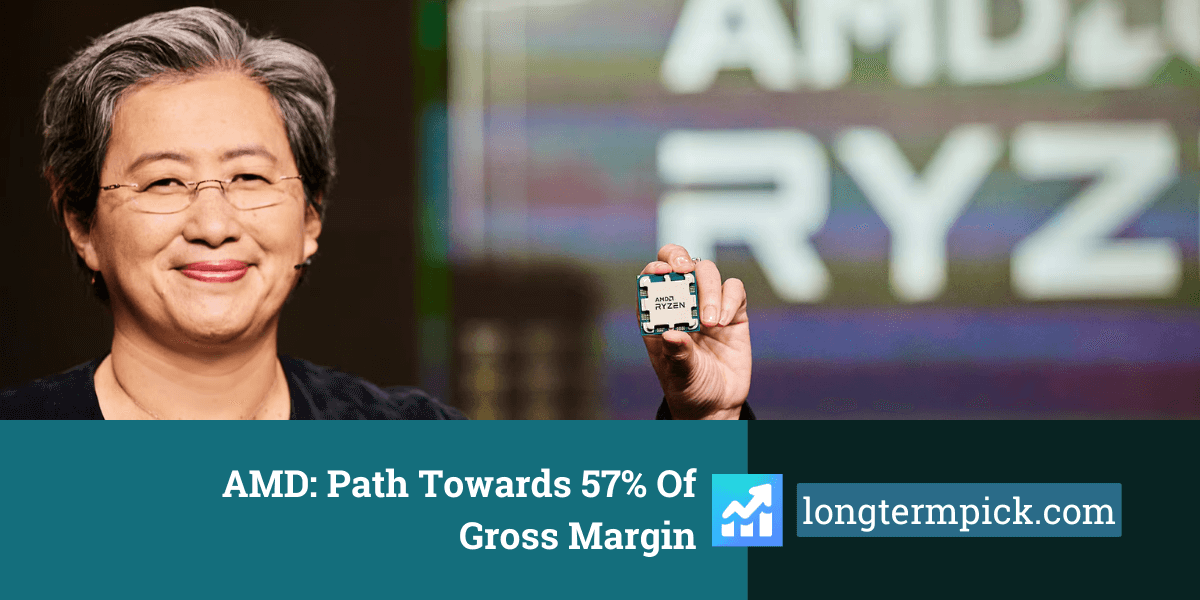







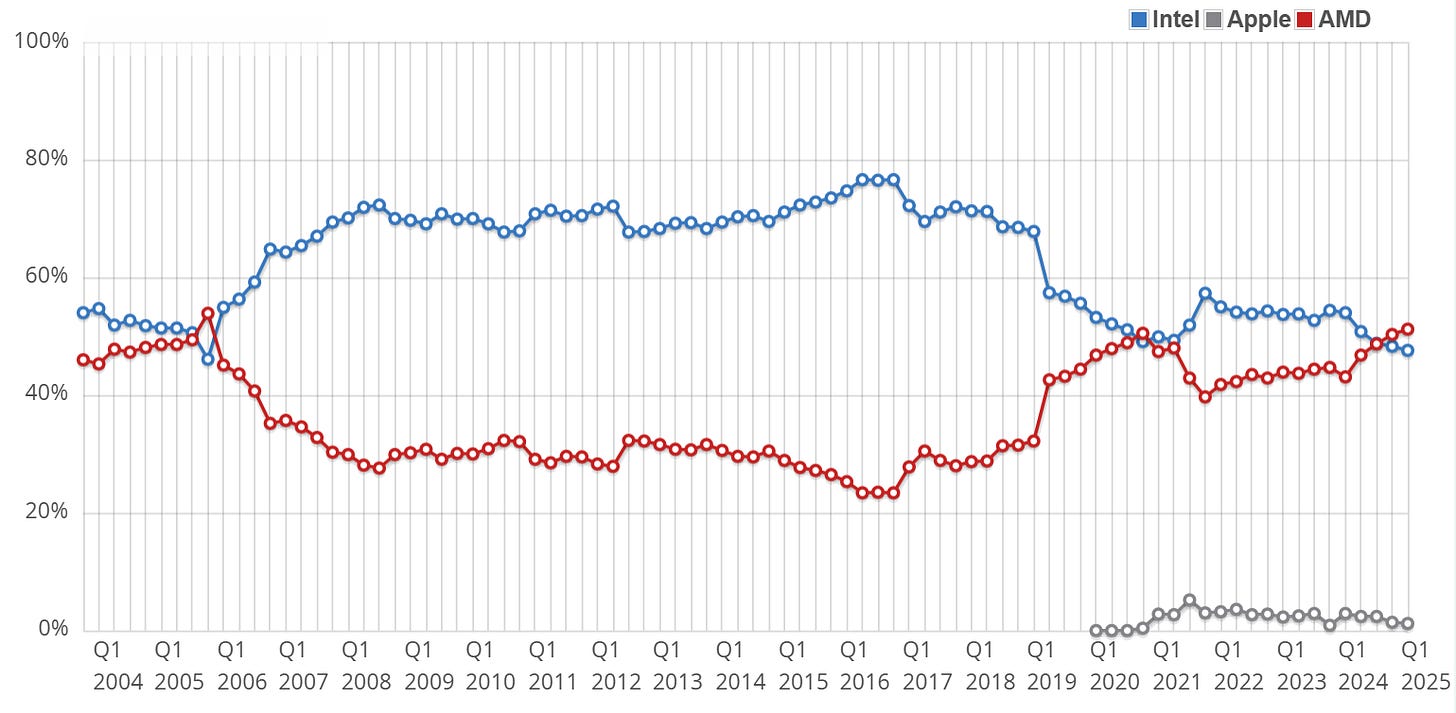





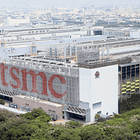





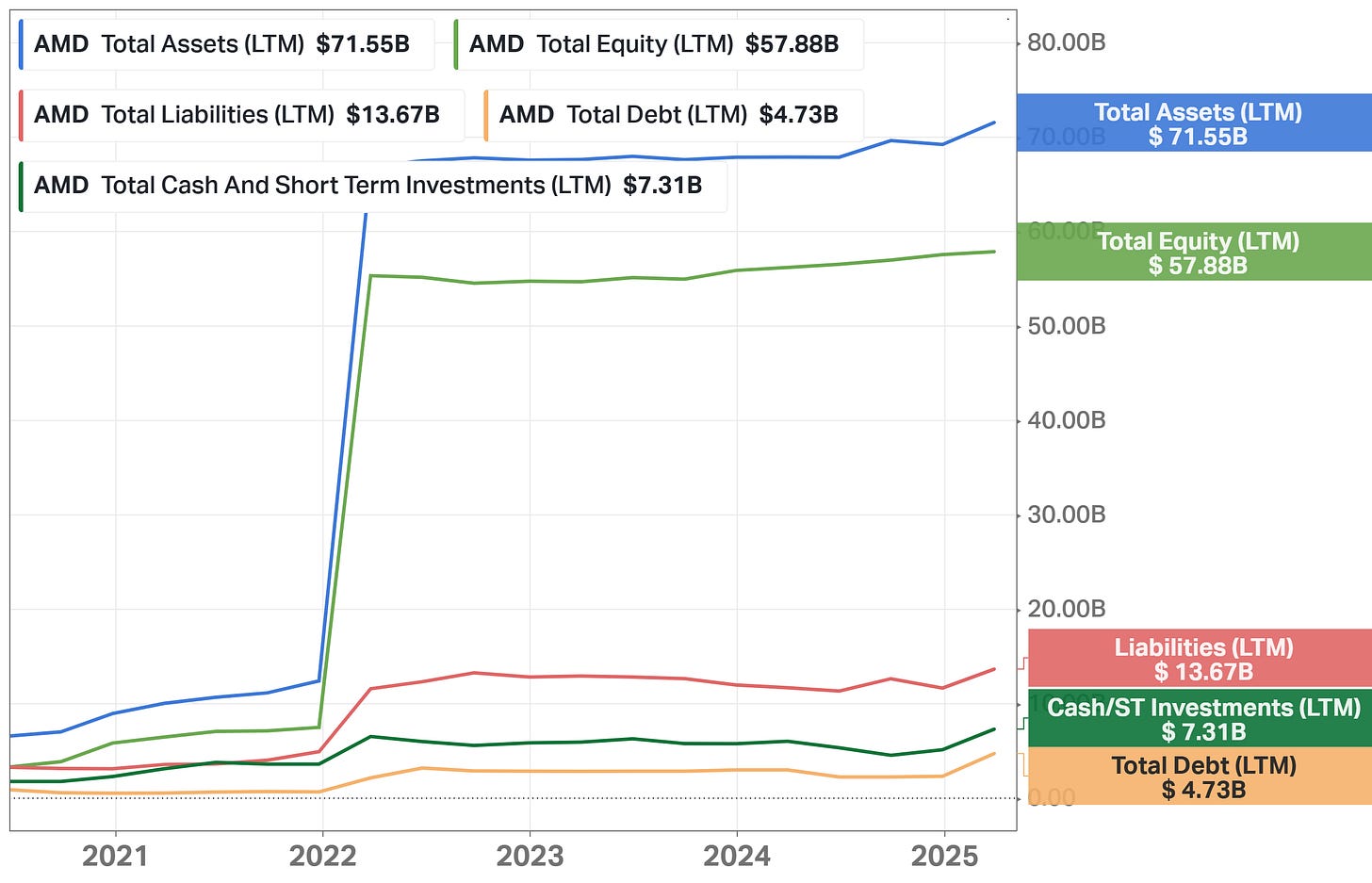






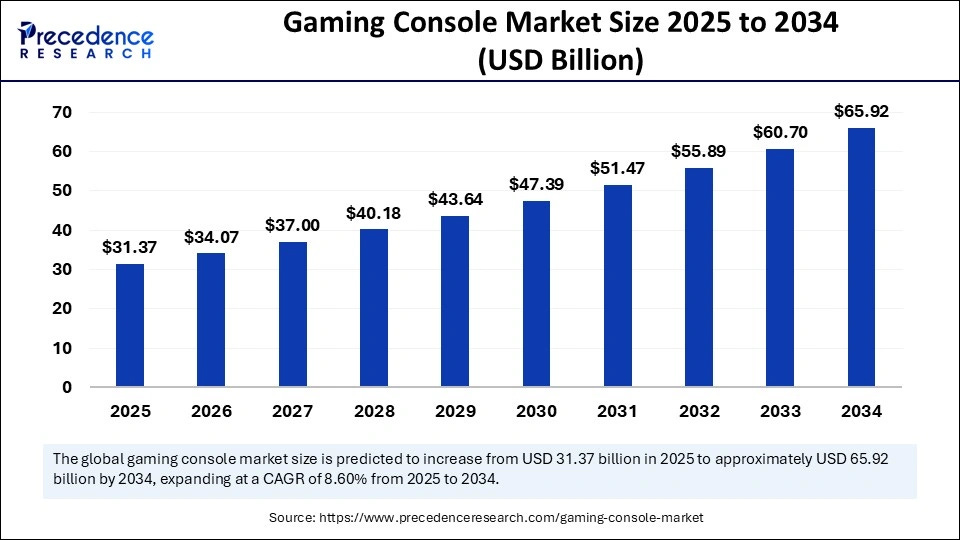



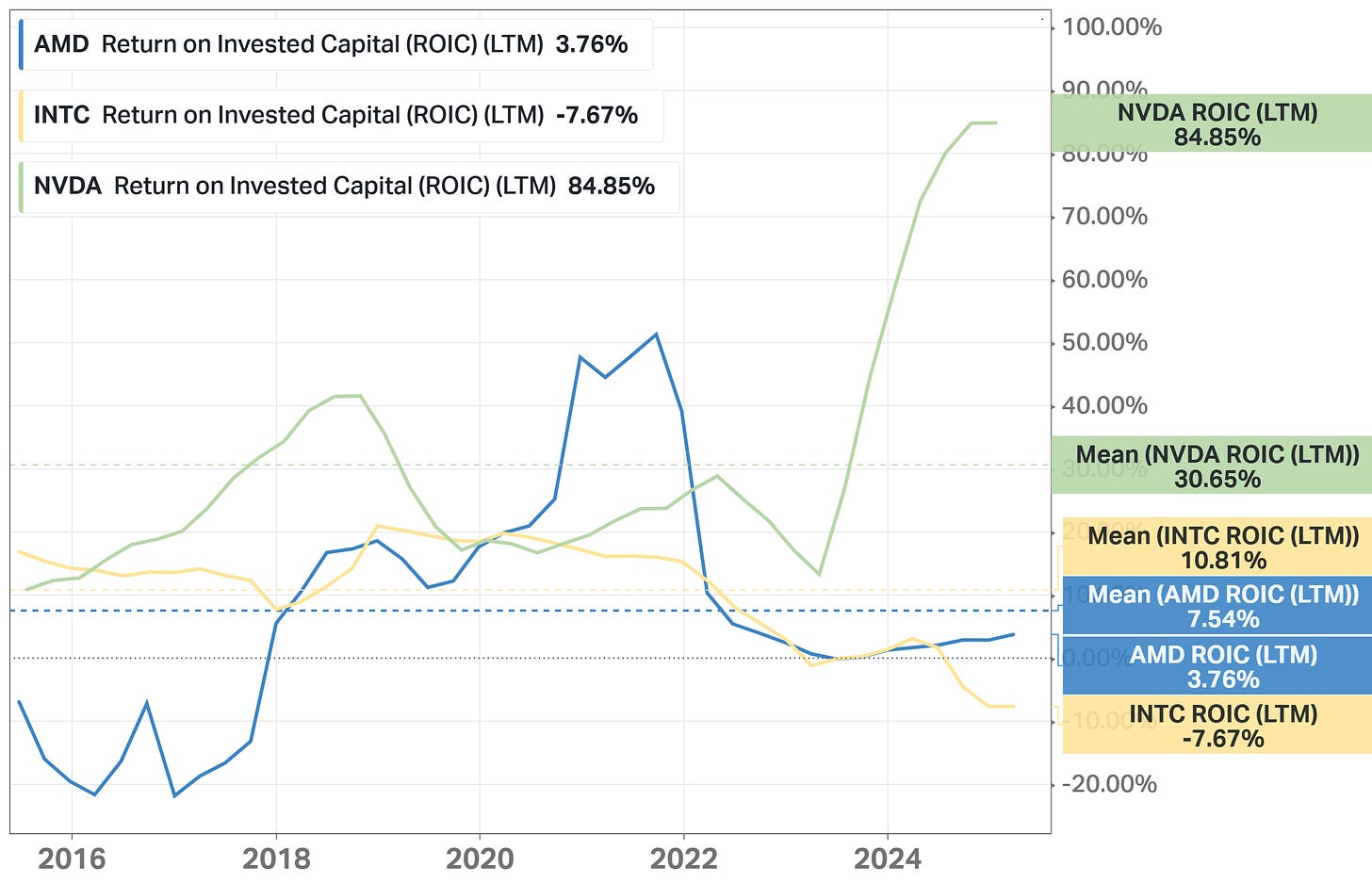




Thanks for the comprehensive analysis! Informative as always!
NVIDIA's premium multiple reflects its AI dominance, but AMD's cheaper valuation and growing talent pool (e.g., George Hotz's Tinygrad, DeepSeek's kernel hacking) suggest ROCm's software gap can close-making AMD a real contender if its ecosystem matures.